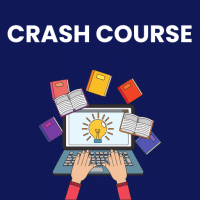B.Ed Entrance Exam > B.Ed Entrance Questions > Gagne and Briggs classify learning objectives...
Start Learning for Free
Gagne and Briggs classify learning objectives into several categories. Which category refers to the ability to state knowledge?
- a)Motor Skills
- b)Intellectual Skills
- c)Verbal Information
- d)Attitudes
Correct answer is option 'C'. Can you explain this answer?
Verified Answer
Gagne and Briggs classify learning objectives into several categories....
Verbal Information involves the ability to state facts and knowledge that an individual has acquired, highlighting the importance of recall and verbal expression.
View all questions of this test
Most Upvoted Answer
Gagne and Briggs classify learning objectives into several categories....
Verbal Information
Learning objectives that focus on the ability to state knowledge fall under the category of Verbal Information. This category mainly involves the recall and recognition of facts, concepts, principles, and procedures.
Characteristics of Verbal Information objectives:
- These objectives require learners to articulate information verbally, such as definitions, explanations, or descriptions.
- They emphasize the ability to remember and communicate knowledge effectively.
- Verbal Information objectives are typically assessed through quizzes, tests, or oral presentations.
- They play a crucial role in assessing a learner's understanding and retention of factual information.
Examples of Verbal Information objectives:
- Define the concept of photosynthesis.
- Explain the steps involved in solving a quadratic equation.
- Describe the main features of the respiratory system.
- List the key events that led to the American Revolution.
In educational settings, Verbal Information objectives help educators gauge a student's grasp of foundational knowledge and their ability to express that knowledge in a coherent manner. By focusing on this category of learning objectives, teachers can ensure that students have a solid understanding of key concepts and are able to communicate their understanding effectively.
Learning objectives that focus on the ability to state knowledge fall under the category of Verbal Information. This category mainly involves the recall and recognition of facts, concepts, principles, and procedures.
Characteristics of Verbal Information objectives:
- These objectives require learners to articulate information verbally, such as definitions, explanations, or descriptions.
- They emphasize the ability to remember and communicate knowledge effectively.
- Verbal Information objectives are typically assessed through quizzes, tests, or oral presentations.
- They play a crucial role in assessing a learner's understanding and retention of factual information.
Examples of Verbal Information objectives:
- Define the concept of photosynthesis.
- Explain the steps involved in solving a quadratic equation.
- Describe the main features of the respiratory system.
- List the key events that led to the American Revolution.
In educational settings, Verbal Information objectives help educators gauge a student's grasp of foundational knowledge and their ability to express that knowledge in a coherent manner. By focusing on this category of learning objectives, teachers can ensure that students have a solid understanding of key concepts and are able to communicate their understanding effectively.

|
Explore Courses for B.Ed Entrance exam
|

|
Question Description
Gagne and Briggs classify learning objectives into several categories. Which category refers to the ability to state knowledge?a)Motor Skillsb)Intellectual Skillsc)Verbal Informationd)AttitudesCorrect answer is option 'C'. Can you explain this answer? for B.Ed Entrance 2025 is part of B.Ed Entrance preparation. The Question and answers have been prepared according to the B.Ed Entrance exam syllabus. Information about Gagne and Briggs classify learning objectives into several categories. Which category refers to the ability to state knowledge?a)Motor Skillsb)Intellectual Skillsc)Verbal Informationd)AttitudesCorrect answer is option 'C'. Can you explain this answer? covers all topics & solutions for B.Ed Entrance 2025 Exam. Find important definitions, questions, meanings, examples, exercises and tests below for Gagne and Briggs classify learning objectives into several categories. Which category refers to the ability to state knowledge?a)Motor Skillsb)Intellectual Skillsc)Verbal Informationd)AttitudesCorrect answer is option 'C'. Can you explain this answer?.
Gagne and Briggs classify learning objectives into several categories. Which category refers to the ability to state knowledge?a)Motor Skillsb)Intellectual Skillsc)Verbal Informationd)AttitudesCorrect answer is option 'C'. Can you explain this answer? for B.Ed Entrance 2025 is part of B.Ed Entrance preparation. The Question and answers have been prepared according to the B.Ed Entrance exam syllabus. Information about Gagne and Briggs classify learning objectives into several categories. Which category refers to the ability to state knowledge?a)Motor Skillsb)Intellectual Skillsc)Verbal Informationd)AttitudesCorrect answer is option 'C'. Can you explain this answer? covers all topics & solutions for B.Ed Entrance 2025 Exam. Find important definitions, questions, meanings, examples, exercises and tests below for Gagne and Briggs classify learning objectives into several categories. Which category refers to the ability to state knowledge?a)Motor Skillsb)Intellectual Skillsc)Verbal Informationd)AttitudesCorrect answer is option 'C'. Can you explain this answer?.
Solutions for Gagne and Briggs classify learning objectives into several categories. Which category refers to the ability to state knowledge?a)Motor Skillsb)Intellectual Skillsc)Verbal Informationd)AttitudesCorrect answer is option 'C'. Can you explain this answer? in English & in Hindi are available as part of our courses for B.Ed Entrance.
Download more important topics, notes, lectures and mock test series for B.Ed Entrance Exam by signing up for free.
Here you can find the meaning of Gagne and Briggs classify learning objectives into several categories. Which category refers to the ability to state knowledge?a)Motor Skillsb)Intellectual Skillsc)Verbal Informationd)AttitudesCorrect answer is option 'C'. Can you explain this answer? defined & explained in the simplest way possible. Besides giving the explanation of
Gagne and Briggs classify learning objectives into several categories. Which category refers to the ability to state knowledge?a)Motor Skillsb)Intellectual Skillsc)Verbal Informationd)AttitudesCorrect answer is option 'C'. Can you explain this answer?, a detailed solution for Gagne and Briggs classify learning objectives into several categories. Which category refers to the ability to state knowledge?a)Motor Skillsb)Intellectual Skillsc)Verbal Informationd)AttitudesCorrect answer is option 'C'. Can you explain this answer? has been provided alongside types of Gagne and Briggs classify learning objectives into several categories. Which category refers to the ability to state knowledge?a)Motor Skillsb)Intellectual Skillsc)Verbal Informationd)AttitudesCorrect answer is option 'C'. Can you explain this answer? theory, EduRev gives you an
ample number of questions to practice Gagne and Briggs classify learning objectives into several categories. Which category refers to the ability to state knowledge?a)Motor Skillsb)Intellectual Skillsc)Verbal Informationd)AttitudesCorrect answer is option 'C'. Can you explain this answer? tests, examples and also practice B.Ed Entrance tests.

|
Explore Courses for B.Ed Entrance exam
|

|
Signup for Free!
Signup to see your scores go up within 7 days! Learn & Practice with 1000+ FREE Notes, Videos & Tests.


















